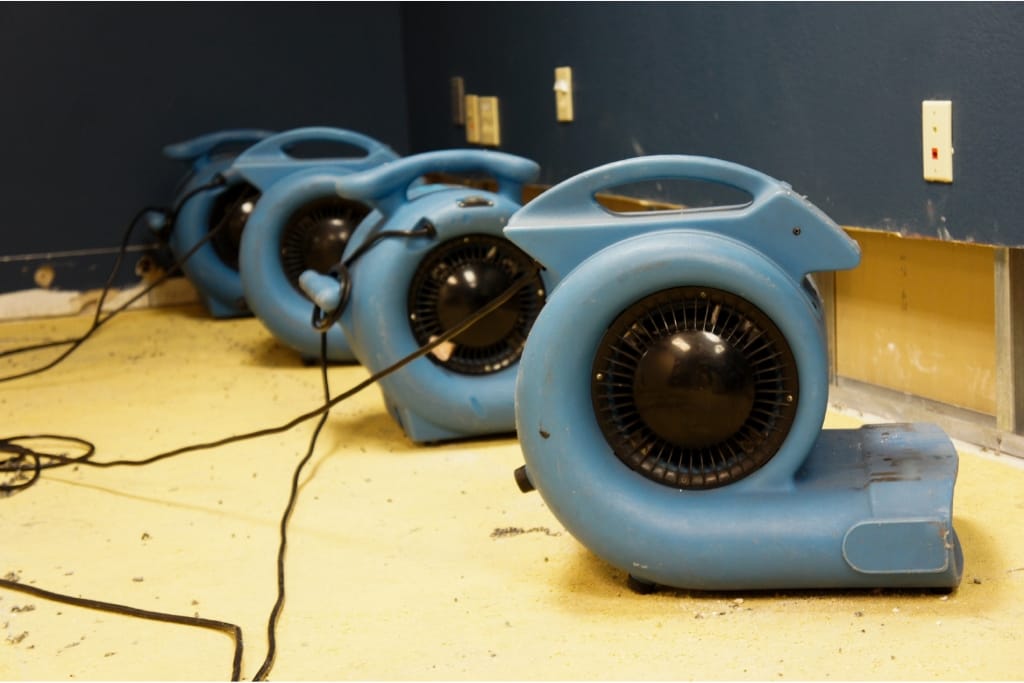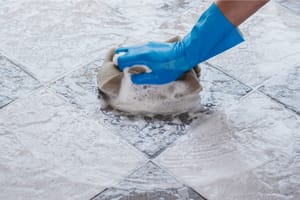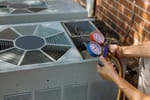If your home has suffered water damage, you know how quickly things can go from bad to worse.
Even if the standing water is removed, this does not mean that your problems are solved.
One of the most common after-effects of water damage is mold growth.
Mold spores naturally exist in the air, and if given the right conditions—such as a damp environment—they can multiply quickly, resulting in an infestation of potentially harmful fungi.
Fortunately, there are steps that you can take to prevent mold from taking hold in your home after a flood or leak.
Let's explore five key tips for preventing mold growth in your home.
1)) Dry Everything Fast
The most important step you can take after any kind of water damage is to dry everything as quickly as possible.
This will help prevent mold from growing on any wet surfaces, as well as help to reduce the risk of secondary damage such as warping or buckling floors and walls.
To dry out your home effectively, use fans and dehumidifiers to suck out moisture from the air and surfaces.
Make sure you open windows too so that fresh air can circulate through your home to help speed up the drying process.
2)) Check for Hidden Moisture
Even if you think you've dried everything out, it's important to check for hidden moisture that could be lurking in hidden areas such as wall cavities or underneath carpets.
If left unchecked, this hidden moisture could create ideal conditions for mold growth, so it's essential that you thoroughly inspect all affected areas to ensure they are completely dry before moving on with repairs or replacements.
If necessary, use a moisture meter to check levels in hard-to-reach places like behind walls or underneath the flooring.
3)) Keep Air Circulating
Once the area has been dried out and repaired, it’s important that air continues to circulate throughout your home in order to avoid dampness from settling again.
Installing ventilation systems such as exhaust fans can help ensure that humidity levels remain low throughout your home; alternatively, opening windows regularly should also do the trick.
4)) Clean Up Quickly & Thoroughly
It's essential that all affected areas are cleaned properly after water damage has occurred; this means removing all dirt and mud before allowing any repair work to begin.
Not only will this help keep your home looking clean and tidy - but it will also help prevent further contamination and potential mold growth caused by bacteria lingering on wet surfaces.
Use a mild detergent solution (or bleach if necessary) with plenty of water when cleaning affected areas; scrub vigorously using a stiff brush until all dirt has been removed from walls and floors before rinsing off with clean water and drying thoroughly with towels or cloths.
5)) Remove Debris & Ruined Materials
Finally, make sure you remove wet debris such as furniture, carpeting, and fabric immediately following any kind of water incident; these materials are highly prone to harboring mold spores if left unattended for too long.
Any ruined materials should be discarded immediately once identified - this includes wooden furniture and floorboards which may have warped due to excessive moisture exposure - otherwise they will quickly become breeding grounds for unwanted organisms such as fungi and bacteria.
Conclusion
Taking steps towards prevention is key when it comes to avoiding costly repairs due to water damage - particularly where mold is concerned.
By taking some simple measures such as keeping air circulating throughout your home regularly, cleaning up quickly after a spillage, and checking for hidden moisture sources - you'll be able to minimize potential risks associated with unwanted microorganisms like mold growing in your property post-water spillage.
While it may be tempting to try and save money by doing it yourself, if your home sustains extensive damage, hiring a professional restoration service should be considered mandatory after any sort of water infiltration incident.
Professional services will use special equipment such as industrial dehumidifiers and fans to ensure that all traces of moisture are eliminated so that mold does not have an opportunity to take root in your home or business premises.
Remember, prevention is always better than cure when it comes to taking action against potential health hazards inside your home!
Download Our Free E-book!








